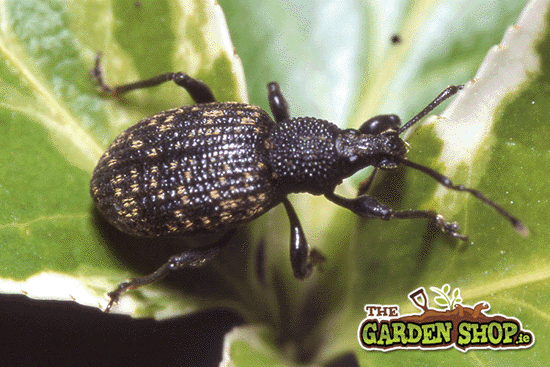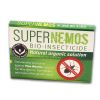How to Control Against Vine Weevil
Vine Weevils are a common garden pest that can attack ornamental shrubs & herbaceous plants. The insect has two life cycles and it is at it's larvae stage that it causes the most damage.

The Vine Weevil is most commonly found around plants growing in pots and containers, it is also prevalent around plants growing in greenhouses or sheltered areas in the garden. Areas that are out in the open or exposed are less likely to experience attacks by Vine Weevils
How to Recognise Vine Weevils
The adult is a small Beetle, black in colour with a long snout. If you spot an adult Vine Weevil, it is likely to lay still and tuck in it's legs as a form of defence.
Both the adult and the larvae can reach a size of 1cm. The larvae can be seen under the soil surface and is white in colour. The grub is usually curled up to form a 'C' shape.
Symptoms of Vine Weevil Attacks
While the grub is more recognisable and more harmful, it is the damage caused by the adult beetle that is more easily spotted. The adult beetles feed on the leaves of plants leaving rounded notches on the edges of the leaves. These notches or holes are quite distinctive. The adult beetles are most busy feeding from Spring to Summer and feed on plants including Euonymus, Rhododendrons, Fuchsia, Lilies, Dahlias, Heucheras and more.
The worst damage caused by the grubs who feed on the roots of plants from Spring to Summer . This feeding can severely weaken the plant’s roots causing the plants to wilt, yellow, drop foliage and die.
How to Control Against Vine Weevil
Physical Control As feeding generally occurs during the night, weevils can be controlled by nocturnal gardening! Go out with a torch and spot and remove beetles from infested plants. Use an upturned umbrella positioned underneath your plants to catch weevils as you knock them off.
You can set up a Vine Weevil trap. One example is to use corrugated cardboard, rolled up into a tube and held together using an elastic band. Position this inside infected plants at night and the next morning you should find several Weevils inside.
Biological Control There are parasitic nematodes including Heterorhabditis Megidis and Steinernema Kraussei. Either can be applied to the soil in late Summer. But their effectiveness is limited by their ability to survive cold conditions and dry or heavy soils.
SuperNemos offers effective & safe biological control against Vine Weevil
Chemical Control Recently new products have become available on the market to control this pest. The active ingredient thiacloprid is found in Bayer’s Provado Vine Weevil Killer, while acetamiprid, found in Rose Clear & Bug Clear can provide up to 4 months of protection against the pest.
To use Bayer’s Provado Vine Weevil Killer you need to apply it in it's liquid form to the foliage of plants. Thiacloprid works its way into plants and if the adult beetle eats the foliage they also ingest thiacloprid leading to death.







